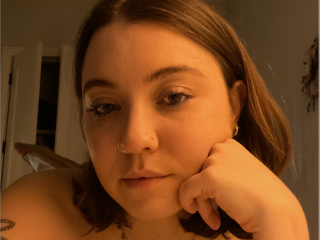
Time Apart Highlighted Important Philosophical Differences.
Those of us who identify with one or more social justice causes often refer to like-minded people as members of our “community.” This is, of course, one of the broader definitions of community since its citizens may share one or more values or interests in common but do not necessarily share living space or resources. Instead, we tend to be bound loosely together based on a common history or common social turned-political interest.
Because of these things and more, modern social justice communities can be brittle. Methodologies change, new ideas about how to properly address the common interest invariably introduce themselves, old ideas are challenged and must withstand scrutiny, thought leaders arise and inspire, prove flawed and crumble, concepts of consent and risk evolve, and what was once considered “the way it’s done” inexorably changes. Hopefully for the better.
Feminism is a classic example. A wide range of philosophical views hinge on a single, simple concept: women are human beings and should be treated as such. Beyond that, things get dicey. Some feminists support sex worker rights, others see sex work as intrinsically demeaning and the result of patriarchy’s oppressive influence. Some feminists support trans rights, while others identify as Trans Exclusive Radical Feminists (TERFs) and consider trans women to be men and trans men to be terribly confused. Issues such as polyamory, swinging, and BDSM activities further complicate who identifies as a feminist and what they include under the term’s umbrella.
Already under pressure from self-proclaimed moral elements and agencies within our larger society (also called a “community”), COVID-19 did us no favors. While it certainly provided us an opportunity to bone up on our academic studies via the internet, mobile digital content, and actual paper publications, we fell out of the habit of interacting with one another in the flesh. Even now, a sizable percentage of people who used to attend festivals, play parties, conferences, and contests are uncomfortable being face-to-face with another person unless there’s a mask and an updated vaccine involved.
Something else happened during those two–three years, a good old generation gap revealed itself. While many older activists and active community members chose to absent themselves from the binding activity in order to pursue other interests, professional and personal, there has been a welcome surge of younger people bringing with them their energy, optimism, and desire to change the world for the better.
Alas, it seems that the Boomers have done little to endear themselves to the younger generations. After all, early Boomers went from Flower Power and Free Love to Wall Street and the Tea Party. Later Boomers, who missed out on the prosperity of their demographically related siblings, have been tarred with the same brush in spite of their greater tendency to identify with Generation X, which ain’t making itself much more popular, unfortunately.
It seems that social justice communities are like Russian stacking dolls with many smaller communities within them. While this provides opportunities for targeted activism and outreach, it also makes it easier to not know everyone within our greater fight or even within our own demographic. Online communications can only accomplish so much. At some point, we need to meet each other and see each other’s full humanity. The internet allows us amazing chances to exchange ideas and collaborate, but it also isolates us in a unique manner. In a way, it’s like feeling alone in a crowd. It does not contribute to a feeling of community, although it can lead to both positive and negative bonds both online and once we start joining together to promote our causes.
“Community is an illusion,” an elder in the Pacific NW leather community told me recently. “Basically, it’s just a rehashing of middle school.”
There’s some sad truth to this observation since cliques within these communities are easily assembled, especially during times of strife and disarray. These cliques can turn into mini mobs that possess a surprising power to reform or destroy depending on their intent and their willingness to engage in productive or destructive negotiations or dialogue. There are excellent and horrible reasons for this since nearly everyone within social justice movements wants to bring about positive change and do the right thing for those who have been marginalized, mistreated, and misunderstood.
Since COVID, especially those who are younger and fresher to their activism or lifestyle communities have expressed an expectation of higher standards than that experienced pre-COVID. Some of this is entirely logical. As our work becomes more mainstream so must our approaches. But is perfect becoming the enemy of good? Sex work, BDSM, poly, swinging, and even a woman’s desire for bodily self-determination is all under assault right now and while workshops and books and online discussion groups are excellent ways to gain information and connect with others, they are not necessarily the best ways to learn what the trenches of the sex-positive world are like. While it’s not a pitch-a-brick-at-the-cops situation for most social justice communities, we’re rarely far from one.
“I honestly don’t know what cis, het people mean by community,” my friend continued. And maybe that’s where some of our confusion stems from. If we’ve experienced minimum oppression, can we fully understand the evolutionary process of a movement? Can we appreciate the clumsy but important efforts of our forebearers while refining our techniques and preparing for or pretending we live in a just society?
That’s a contentious question. It makes people feel defensive, which makes it hard to discuss. It labels people with decades of contributions as predators and consent violators both when they have done wrong and when they have done things differently or from a place of ignorance. As we move our sex-positive causes forward, we are learning to adjust to the mainstream marketplace of both ideas and sensibilities. This both waters down and concentrates our ability to make societal progress and maintain our identities as actual communities.
While it can help us access the seats of mainstream power it can also rob us of our collective histories and identities because so much of it is flawed. After all, it’s recent that anyone stood up for or acknowledged that they are consensual perverts, sex workers, queers, swingers, or members of polycules. Those who have been a burr in the butt of law enforcement officers and moral absolutists have often fucked up along the way as new situations presented themselves and old solutions no longer were effective or appropriate.
In order to survive the ongoing assault from the right wing, it’s essential that we establish our common ground and then defend it. Fortunately, groups like the Free Speech Coalition, National Coalition for Sexual Freedom, Woodhull Foundation, and Consent Academy exist to help us process our conflicts and promote our important work toward achieving equity and freedom.
If we rely upon the concept of community to be a binding and long-lasting source of support and inspiration, chances are good that we will eventually find ourselves at odds with the self-proclaimed leaders of those communities and their supporters, especially if they are too far removed from their community’s early days and the issues that were confronted or feared. The truth about communities is that they possess a wealth of subtext. And subtext can take patience and a dispassionate soul to understand fully.
In order to achieve our goals of liberty and freedom for sexually expressive persons, reintroducing the idea of restorative justice, of reserving judgment until all facts are presented, of remembering that communities are self-identified and self-sustaining entities. Those within the sex-positive umbrella often include people who have been damaged by society’s condemnations or survivors of its cruelty. While there are certainly those who grew up within loving families and emerged relatively unscathed, much of humanity has not been so lucky. A nurturing family is no guarantee that it produces trauma-free offspring. God does play dice and there’s no knowing how any particular word or action will land. The line between evil and ignorance can be clear or muddy depending both on circumstances and perspectives. Intent is rarely taken into consideration in the modern world, which wants so badly to defend and protect the vulnerable, which is laudable and to be encouraged.
A community requires well-established boundaries, a determinative value system that embraces justice, and a dedication to healing with courage and compassion when conflict and confusion arise.
In short, any "community" is made of people who share a common vision about how the future can be, although they may disagree on the details. Time apart has allowed us to fall victim to divisive stereotypes and cliches, neither of which do us any favors. It has made allies into adversaries and complicated the process of elders sharing knowledge and insights. Likewise, it has inhibited the youthful and new to the scene from sharing their ideas of improvement.
Whether we hoist a red umbrella, an upside-down pineapple, a rainbow flag, the leather pride flag that Tony DeBlase designed, or one of its descendants, we are all well advised to remember that our goal is ultimately the same. Our traumas, experiences, and reactions may be different, but our common, if unacknowledged, bond is our fallible humanity.
Was the sex workers' creed of discretion broken when Stormy Daniels admitted she banged Donald Trump? Has consent culture ruined the spontaneity of sex or has it enhanced mindfulness and resulted in expansive erotic experiences? Has agism become a serious concern among sexuality liberation communities? Where do trans people fit into the queer rainbow?
The answers to these and other questions likely involve taking an uncomfortable assessment of both us and our collective identities. In a world that still marginalizes so many of us for simply daring to exist without shame, giving into the temptation of eating our own is not in our long-term best interest. Mistakes have and will be made. Moving from the mentality of Stonewall to modern concerns about microaggressions is a process. And patience, I am assured, is a virtue.
Ignorance, prejudice, and fear will sometimes keep us from doing the ideal thing. Those who are habitually incapable of growth and inclusivity should rightly find themselves marginalized and directed toward education and betterment. A self-identified community needs to not merely find a common cause in a shared interest but also share a dedication to nurturing both the overall collective and the individuals who populate it.
The learning curve for a social justice cause, especially in the ever-evolving sex-positive realm requires a unique balance of empathy and organization. A marginalized self-identified sex-positive community relies upon both vigilant self-policing and nurturing its members through complex transitions and difficult social and cultural changes.
This is a challenging mission even under the best of circumstances. Add several years of isolation and the entry of a new and well-educated if marginally experienced generation of activists with their own ideas about how best to accomplish their goals and the potential for fracture within a self-identified community is high.
The solution? I don’t know. But it probably has something to do with remembering that whether we’re sex workers, sadists, masochists, Tops, bottoms, swingers, relationship anarchists, members of a line family, polyamorists, trans, queer, or asexual, we’re human beings living through a traumatic time and doing our best to figure out what the hell is going on. I’m not given to quoting American mottos, but when it comes to sustaining social justice communities, “United we stand, divided we fall” is not a bad one to keep in mind.























